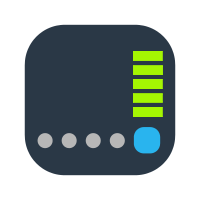
You can only use Exchange Online PowerShell to do the procedures in this article. What do you need to know before you begin? Policy filtering, Content filtering and Defender for Office 365 checks will still be applied to the messages. To prevent users from adding entries to their Safe Senders list in Outlook, use Group Policy as mentioned in the About junk email settings in Outlook section later in this article. Messages from senders that users have added to their own Safe Senders lists will skip content filtering as part of EOP (the SCL is -1). Admins can configure the safelist collection on any user's mailbox.ĮOP is able to move messages to the Junk Email folder based on the spam filtering verdict action Move message to Junk Email folder or the Blocked Senders list on the mailbox, and prevent messages from being delivered to the Junk Email folder (based on the Safe Senders list on the mailbox).Īdmins can use Exchange Online PowerShell to configure entries in the safelist collection on mailboxes (the Safe Senders list, the Safe Recipients list, and the Blocked Senders list). Users can configure the safelist collection for their own mailbox in Outlook or Outlook on the web (formerly known as Outlook Web App). The entries in these lists determine whether the message is moved to the Inbox or the Junk Email folder.

Junk email settings that users configure for themselves in Outlook or Outlook on the web: The safelist collection is the Safe Senders list, the Safe Recipients list, and the Blocked Senders list on each mailbox. For more information about ZAP, see Zero-hour auto purge (ZAP) in Exchange Online. Similarly, if zero-hour auto purge (ZAP) determines a delivered message is spam or phish, the message is moved to the Junk Email folder for Move message to Junk Email folder spam filtering verdict actions. For more information about spam filtering verdicts in anti-spam policies, see Configure anti-spam policies in EOP. Move messages to the Junk Email folder based on anti-spam policies: When an anti-spam policy is configured with the action Move message to Junk Email folder for a spam filtering verdict, the message is moved to the Junk Email folder after the message is delivered to the mailbox. The user's Safe Sender list and Blocked Senders list will continue to work as usual. EOP routes messages based on the actions set in anti-spam policies.

The Enabled parameter on the Set-MailboxJunkEmailConfiguration cmdlet no longer has any effect on mail flow. Other names may be trademarks of their respective owners.EOP now uses its own mail flow delivery agent to route messages to the Junk Email folder instead of using the junk email rule.
#Neorouter shared folder disabled android
The Android robot is reproduced or modified from work created and shared by Google and used according to terms described in the Creative Commons 3.0 Attribution License. Microsoft and the Window logo are trademarks of Microsoft Corporation in the U.S. Alexa and all related logos are trademarks of, Inc. App Store is a service mark of Apple Inc. Mac, iPhone, iPad, Apple and the Apple logo are trademarks of Apple Inc., registered in the U.S. Android, Google Chrome, Google Play and the Google Play logo are trademarks of Google, LLC. Firefox is a trademark of Mozilla Foundation. or its affiliates in the United States and other countries. NortonLifeLock, the NortonLifeLock Logo, the Checkmark Logo, Norton, LifeLock, and the LockMan Logo are trademarks or registered trademarks of NortonLifeLock Inc. LifeLock identity theft protection is not available in all countries. The Norton and LifeLock Brands are part of NortonLifeLock Inc.

In the Local Disk (C:) Properties window, click Close. In the Network Sharing and Security section, examine to see if either of the two check boxes is checked.
#Neorouter shared folder disabled windows
On Windows XP: Click the link "If you understand the risk but still want to share.

In the Advanced Sharing window, check if Share this folder option is checked. If the User Account Control window appears, click Continue. In the Local Disk (C:) Properties window, under Sharing tab, click Advanced Sharing. On Windows XP: Right-click drive C, and click Sharing and Security. On Windows Vista: Right-click drive C, and click Share. On Windows 10/8/7: Right-click drive C, and select Share with and then Advanced Sharing On Windows 11: Right-click drive C, and select Properties Press the Windows + E keys to open the My Computer or Computer window.ĭepending on your version of Windows, do one of the following: Configure the shared Windows folders for maximum network protection


 0 kommentar(er)
0 kommentar(er)
